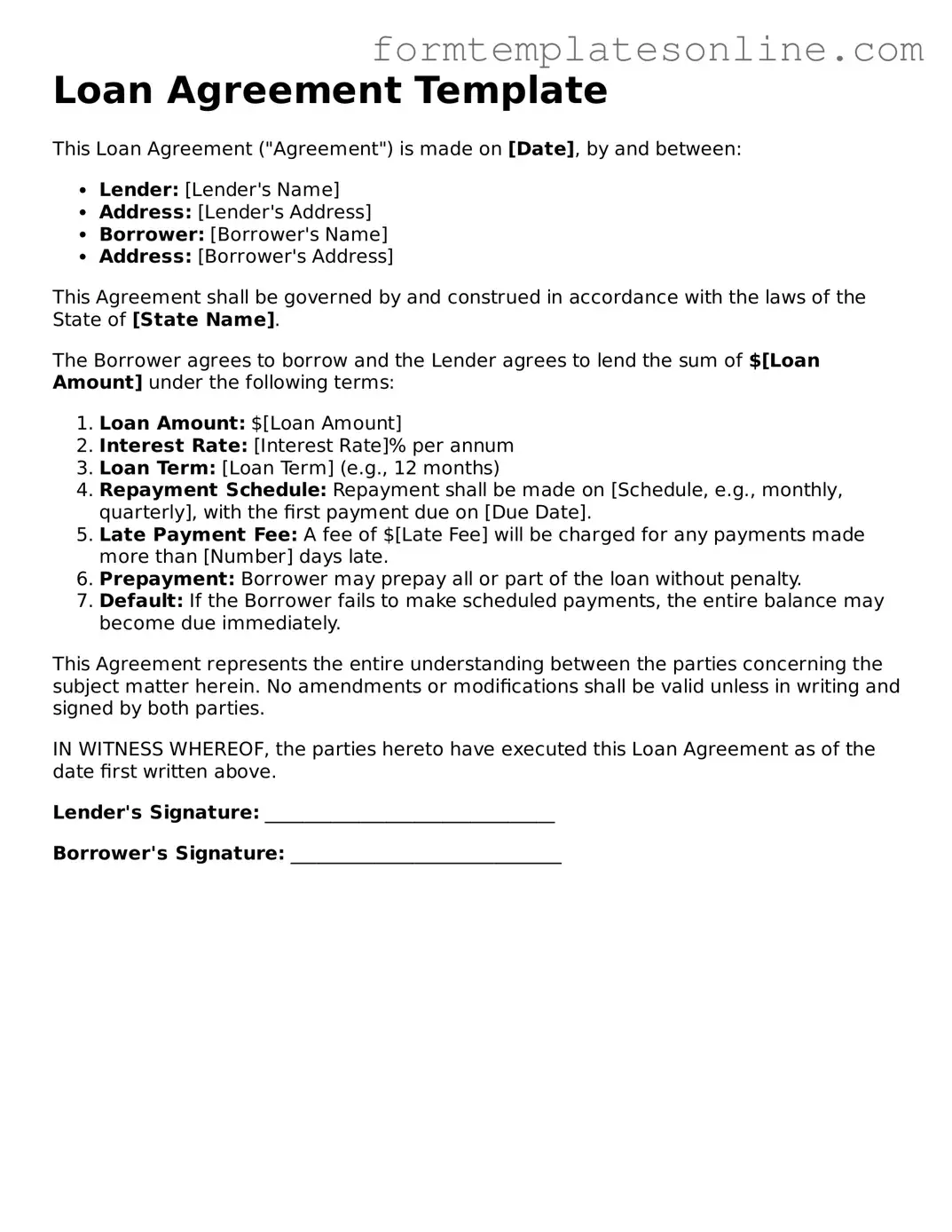What is a Loan Agreement form?
A Loan Agreement form is a legal document that outlines the terms and conditions under which one party lends money to another. This form typically includes details such as the loan amount, interest rate, repayment schedule, and any collateral involved. It serves to protect both the lender and the borrower by clearly defining their rights and obligations.
Why is a Loan Agreement important?
A Loan Agreement is crucial because it provides a clear record of the transaction. It helps prevent misunderstandings between the parties involved. By specifying the terms, it minimizes the risk of disputes over repayment and other obligations. Additionally, having a written agreement can be beneficial if legal action is required in the future.
What should be included in a Loan Agreement?
Key components of a Loan Agreement include the names and contact information of the lender and borrower, the principal amount of the loan, the interest rate, repayment terms, and any fees associated with the loan. It should also outline the consequences of default, such as late fees or legal action, and specify whether the loan is secured or unsecured.
Can a Loan Agreement be modified after it is signed?
Yes, a Loan Agreement can be modified after it is signed, but both parties must agree to the changes. It is advisable to document any modifications in writing to ensure clarity and prevent future disputes. Both parties should sign the amended agreement to acknowledge their consent to the new terms.
What happens if a borrower defaults on a Loan Agreement?
If a borrower defaults, the lender has several options depending on the terms outlined in the Loan Agreement. The lender may charge late fees, demand immediate repayment of the remaining balance, or take legal action to recover the owed amount. If the loan is secured, the lender may also have the right to seize the collateral.
Is it necessary to have a lawyer review a Loan Agreement?
While it is not strictly necessary to have a lawyer review a Loan Agreement, it is highly recommended, especially for larger loans or complex agreements. A lawyer can ensure that the terms are fair and legally enforceable. Their expertise can help identify potential pitfalls that might not be obvious to individuals without legal training.
How can I ensure my Loan Agreement is legally binding?
To ensure that a Loan Agreement is legally binding, both parties must sign the document. It is also advisable to have the agreement notarized, as this adds an extra layer of authenticity. Additionally, both parties should receive a copy of the signed agreement for their records. Clear and unambiguous language throughout the document will further strengthen its enforceability.
